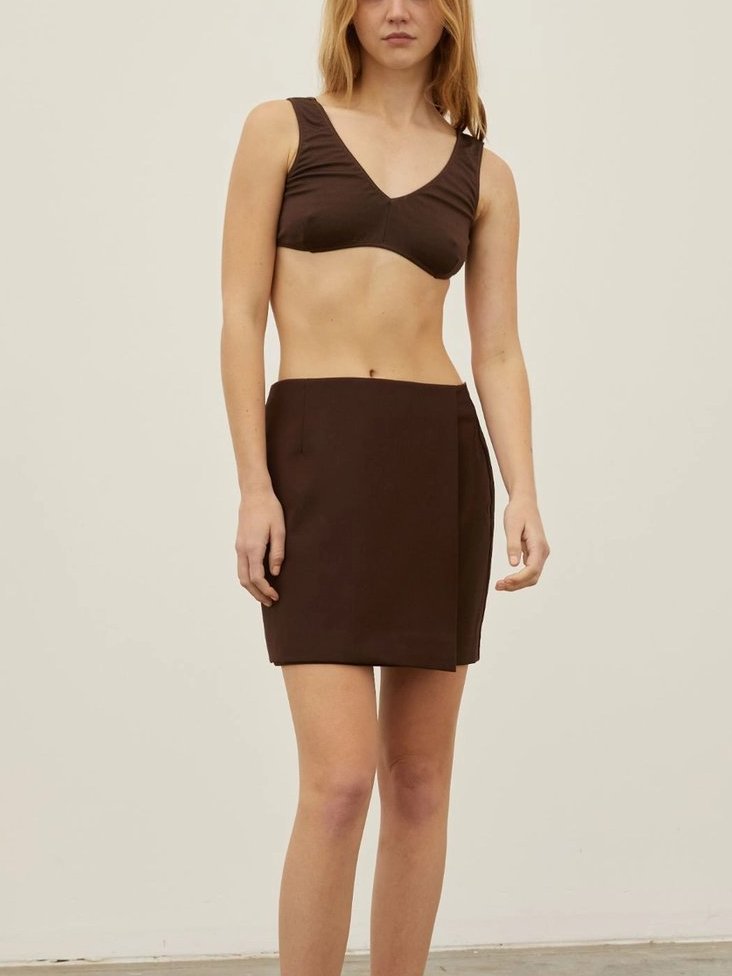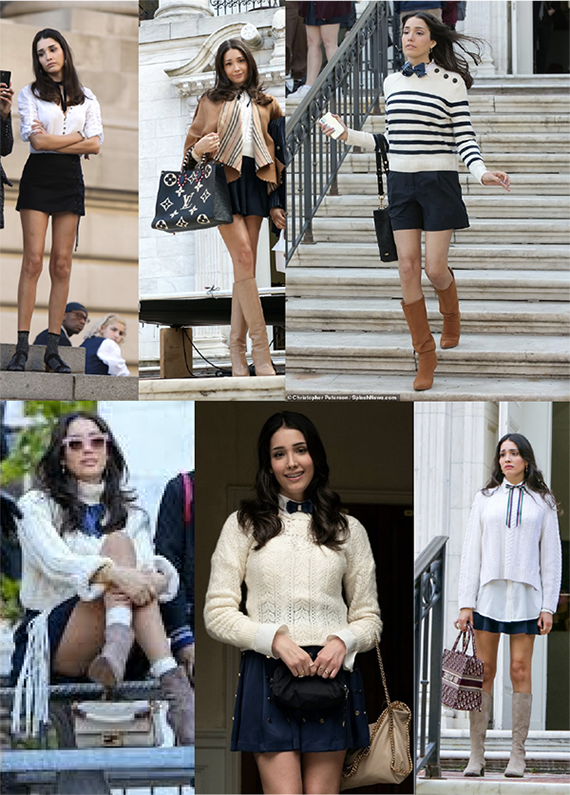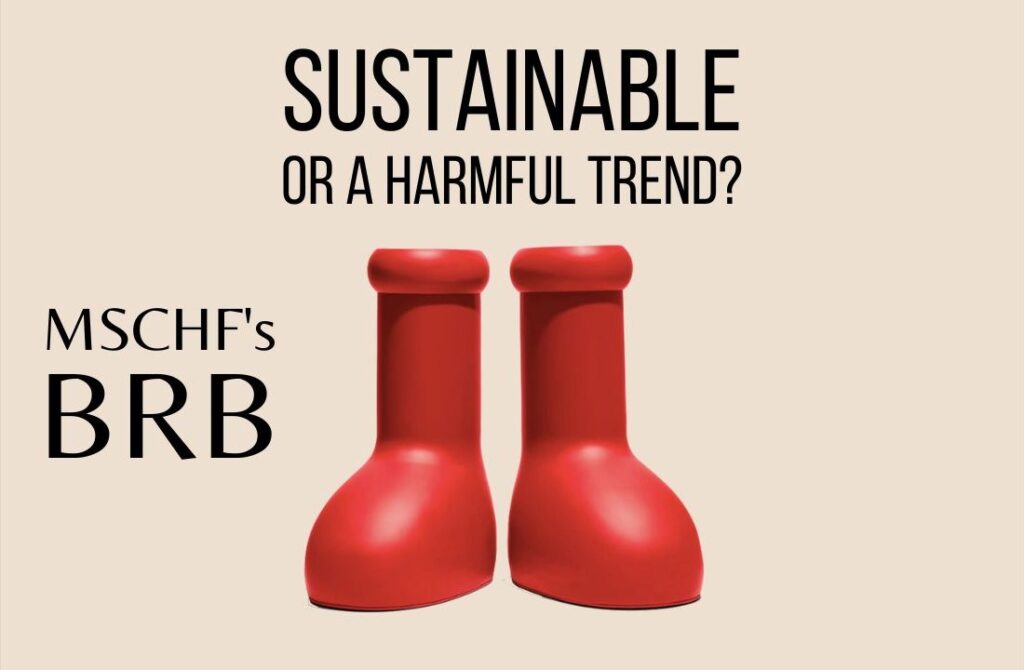The fashion industry is one of the biggest contributors to climate change, so it’s really important we try to improve this while we still can. We have a lot of influence on this as consumers (maybe even more than brands, although this is very debatable). We can make a big difference if we’re mindful of every purchase and treat clothes just better in general. In this post, I’m giving 5 tips on how you can change your shopping behaviour to lower the impact you have on the environment. Don’t worry, some of these might be easier and cheaper than you think! You don’t have to feel discouraged if you can’t immediately implement all these 5 points. Switching to a sustainable wardrobe is a process that can take a while and is different for everyone. Even if you decide to do 1 or 2 of them, you can already be very proud of yourself!
1. Buy from brands who put effort into making their products sustainable
The fashion industry has become this mess of pollution and waste because of clothing brands who choose the most harmful options for every step in their production process. By default, you should see all clothing brands as harmful to the environment. Only if they show they are actively taking action to keep the impact of their products as low as possible, can we consider them a sustainable brand, or at least a less harmful brand. This can include using eco-friendly fabrics, producing locally at certified factories and using non-toxic dyes. One of the things I do on this website, is keep a list of sustainable brands all over the world to make the search easier for you. You can find the list here.
I can already hear you thinking: but sustainable brands are more expensive. True. Sustainable brands are more expensive, but unfortunately, their prices are a lot more realistic. Fast-fashion brands have to go to extreme lengths to get to their low prices, doing a lot of unethical things to get their way. This includes exploiting the workers who make the clothes by paying them close to nothing and making them work in terrible working conditions, and using really harmful materials that are easy to get (hence the low price) but extremely bad for the environment. If we make clothes the way they should be made, you actually end up at the prices a lot of sustainable brands set. (Though, the prices might be lower in the future if the demand for sustainable fashion will increase.) If you’re used to buying multiple new items every month, I agree that it will be difficult to transition to sustainable brands because you probably won’t be able to afford that. The way you might be able to make the switch is if you:
2. Simply buy less (if you usually buy more than you really need)
Excessive consumerism is a big problem in the fashion industry. For this point, It doesn’t even matter whether you purchase from a fast-fashion brand or a sustainable brand. Buying clothes in bulk will never be good for the planet, even if you buy from an eco-friendly brand. All products have an impact on the environment. Products from sustainable brands have a smaller impact but all garments require resources. If you usually spend hundreds per month on a few dozen new items from a fast-fashion brand, you could use those hundreds to buy a few pieces from sustainable brands instead.
Yes, clothes are essential items that everyone needs, but technically you only need one outfit, so everything else in your wardrobe is considered non-essential. Since the introduction of fast-fashion around 30 years ago, we’ve been treating clothes as an essential need that we buy very frequently, as if we’re buying food. There is no set amount of items you should buy until you can consider yourself a responsible shopper. This will look different for everyone based on your behaviour and the types of products you buy. But you’re already doing a really good job if you go from buying something new every week to only once a month. Now, I know this sounds boring. Like you have to wear the same clothes every day. Especially if you’re someone who loves fashion and enjoys putting together outfits (this is me). I can assure you that you don’t have to give up your love of fashion and playing around with styling if you:
3. Wear secondhand clothes
Thrifting is a great way to still feed your urge for shopping without having a really big impact on the environment. The best thing is: it’s often as affordable as fast-fashion. You can get secondhand, or even third or fourth hand clothes in different ways. You can go to a thrift store, swap clothes with friends or family, or even rent clothes from some brands. As for thrifting, there are probably some secondhand shops near you and there are online platforms like Vinted, ThredUP and Poshmark where you can sell and buy secondhand clothes. Swapping is a nice way to share items with friends and family, but there are also initiatives that organize local clothing swap events. Renting is also becoming more available lately. This is especially great for things you’ll only need for a short time, like maternity clothes, a wedding that you’re attending, or a school dance.
There are still sometimes misconceptions about secondhand shopping, like for example that the clothes are dirty or that you won’t find new trendy pieces. This is not the case. Many people buy clothes and wear them once and then realize it’s just not their style, so they sell it even if they only wore it once or twice. Or sometimes people just want to wear an outfit once for a certain occasion. There are many reasons clothes that are still from the current season and that are in perfect condition end up on secondhand websites or in thrift stores. It’s not all heavily worn and from Spring/Summer 2010. Speaking of worn out clothes, you can also make a positive change if you:
4. Take care of the things you own
Your environmental impact doesn’t stop once you purchase a garment and hang it in your closet. Your behaviour towards the clothes you own can also make a big difference. First of all, many new purchases are made to replace an item that ripped or is too worn out, for example a sweater that has a hole in it or a dress that’s been washed a few too many times so it has fuzz and fabric pills everywhere. You don’t have to replace clothes as often if you take care of them from the moment you take them home. If a clothing item has a hole or tear, you can learn how to repair it or maybe you have a friend or family member who is already skilled in this. There are really fun ways to repair a clothing item like adding patches or threads to cover up holes in contrasting colours.
Secondly, I want to touch on washing clothes. Washing not only uses resources like water and energy, but it also makes the lifespan of a clothing item shorter. Every time you wash something, the quality will get a little worse. Not only that, but washing clothes made of polyester fabric also releases microplastics into the water streams (since it’s basically a plastic material), which is incredibly bad for us and the environment. You can learn more about microplastics in this blog post. You don’t always have to wash clothes after every wear, and there are ways you can lower the amount of times you have to wash something. For example, you can wear a layer underneath a sweater so you only have to wash the layer that is directly touching the skin, rather than wash the sweater as well every time. You can even clean some clothes by just hanging them and airing them out in the fresh air. Especially wool is an amazing material that cleans itself naturally. If a clothing item only has a stain and wouldn’t otherwise need to go in the laundry basket, you can wash it by hand instead. When you grow out of some clothing pieces and don’t want to wear them anymore, you don’t have to feel bad. Just make sure you:
5. Get rid of your clothes in a responsible way
The most sustainable way we can treat clothes, is by keeping them in use for as long as possible. Although there are sustainable ways of destroying a clothing item, like recycling, it’s best if the garment has lived a full life before getting shredded to pieces. Clothing should not be a disposable good that ends up in the trash bin after a few wears like single-use food packaging. This doesn’t mean you have to keep your clothes for 30 years like our parents and grandparents did. A clothing item can have many different owners in its’ lifetime. You can pass your item on to the next person by selling it secondhand, swapping with friends, donating or sending it to a company that will recycle it. If you donate, make sure to research the company you’re planning to send it to, so you know for sure the company will actually do something good with the clothes. Some brands have a programme where you can send the items back and the brand will re-sell or recycle them. Whatever you do, do not throw them in the trash bin because then they’ll end up polluting our air, soil and water while they sit in landfills (garbage dumps) for decades or even hundreds of years.
The main thing I hope you take away from this post is that clothes are a lot more valuable than a lot of brands make it seem. Here you can read all the steps involved in producing a clothing item!
What is your favourite way to make your wardrobe more sustainable?
